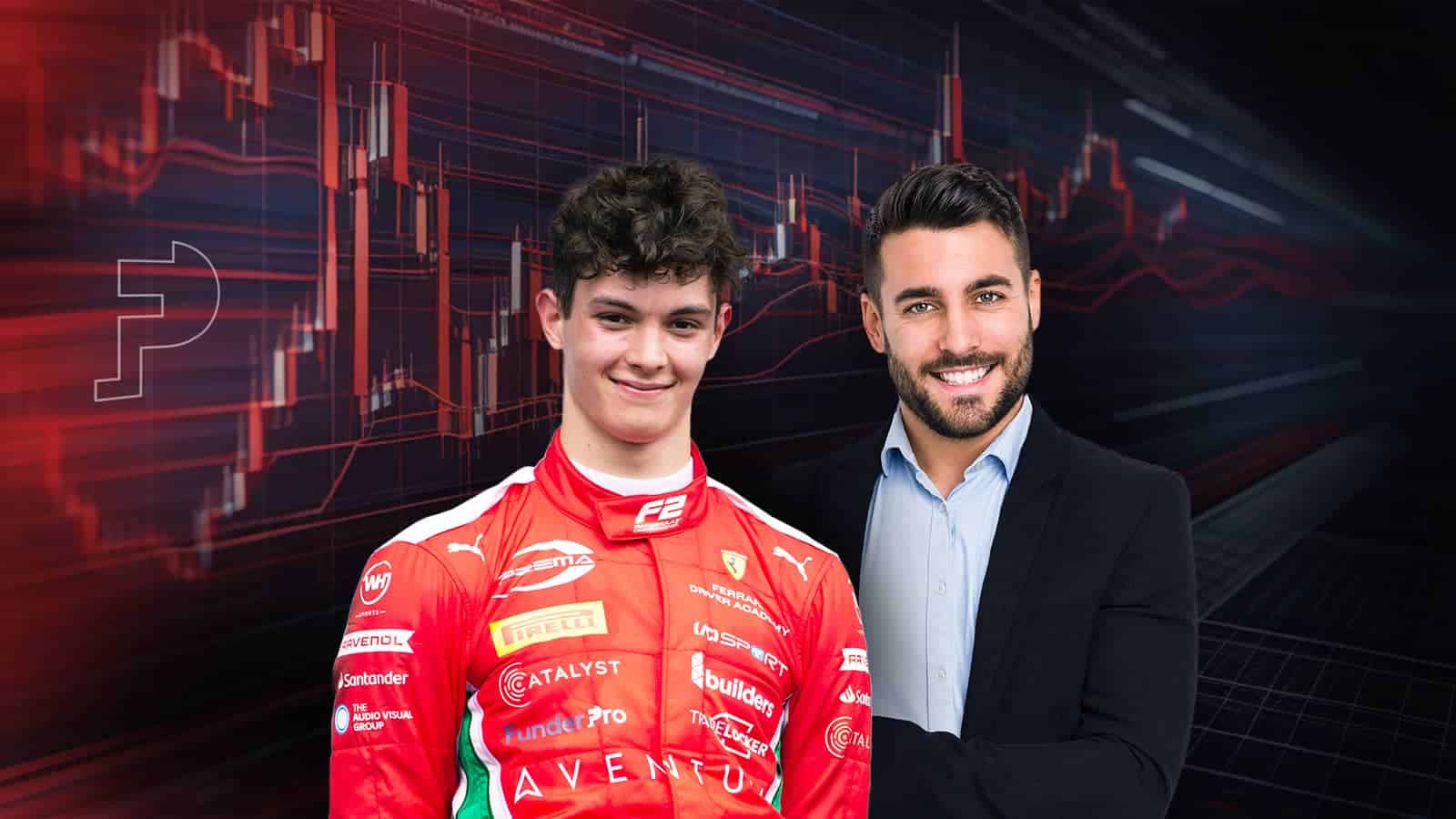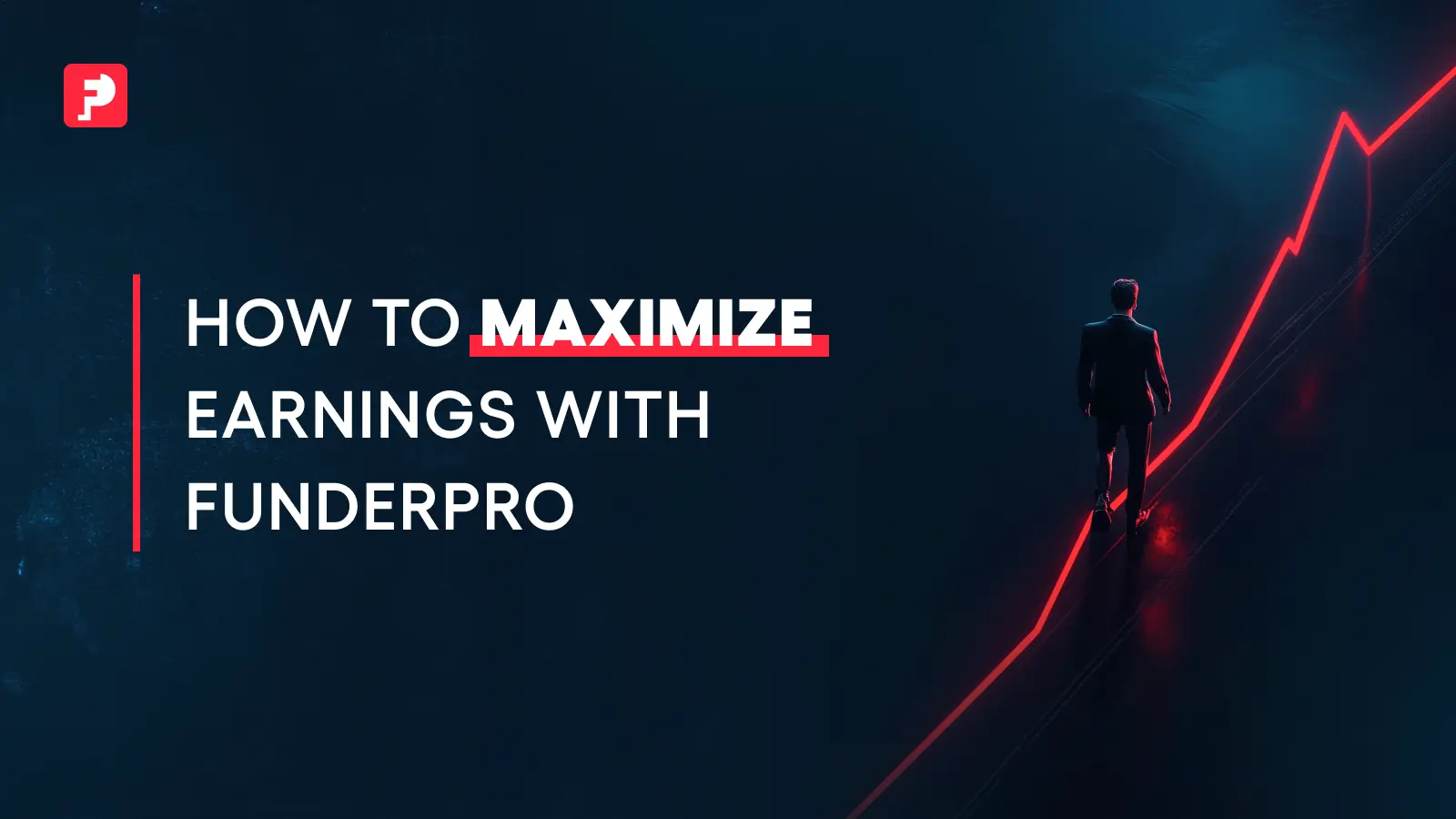
Success Strategies: Shared Traits of Traders and F1 Drivers
In the world of Formula 1 racing, where split-second decisions and flawless execution are absolute, success is achieved through a combination of skill, strategy, and a relentless pursuit of excellence. Surprisingly, these qualities are not limited to the world of Motorsports. Traders, who enter the fast-paced world of financial markets, share many similarities with F1 drivers when it comes to achieving success. In this article, we will explore the surprising parallels between traders and F1 drivers and take a closer look into how their strategies for success can be applied in the world of trading.
Sponsorship: FunderPro and Ollie Bearman
Before we dive into the similarities between traders and F1 drivers, it’s worth mentioning the recent collaboration between FunderPro and the raising F2 star pilot Ollie Bearman. At FunderPro we, as a leading prop trading firm, have recognized the alignment between the world of trading and motorsports by sponsoring Bearman, providing him with the necessary support and resources to pursue his racing career, exactly like we do for traders. This partnership signifies the shared values of excellence, precision, and a drive to succeed, bridging the worlds of trading and Formula 1.
Mastering the Art of Preparation
Both traders and F1 drivers understand the importance of careful preparation ahead of time. Prior to every race, F1 drivers study the track, analyze weather conditions, and fine-tune their race strategies. They inspect every detail, from cornering angles to the optimal racing line. Similarly, traders carefully research and analyze financial markets, study historical data, and keep track of economic indicators. Dedicated traders are constantly performing proactive market research by examining trends, patterns, and key factors that can influence their trading decisions. Both racing drivers and traders require a deep understanding of the environment in which they operate, to allow for better decision-making and capitalization on opportunities.
Embracing Technology
Technology plays a vital role in both trading and Formula 1 racing. F1 drivers rely on advanced telemetry systems, real-time data analysis, and simulations to optimize their performance on the track. They have access to a huge amount of information that helps them understand their car’s behavior, monitor tire conditions, and hone their driving technique. Likewise, traders utilize cutting-edge trading platforms, algorithmic trading systems, and artificial intelligence-powered tools to gather and analyze vast amounts of market data and make better decisions. By leveraging technology, both traders and F1 drivers can gain a sound competitive edge.
Maintaining Emotional Discipline
Keeping emotions in check is crucial for both traders and F1 drivers. F1 drivers must remain focused and composed amongst the intense pressure of racing at high speeds, making split-second decisions that can make or break their race. They need to manage their adrenaline, stay calm under pressure, and avoid getting overwhelmed by external factors. Similarly, traders need to exercise emotional discipline, especially during periods of market volatility, to avoid impulsive and irrational trading decisions driven by fear or greed and take care of their trading psychology. This is especially true in the world of proprietary trading, where traders could lose the large funds that back them. The ability to detach from emotions and stick to a well-defined strategy is a common trait shared by successful traders and F1 drivers. They understand that making decisions based on emotions can lead to costly mistakes and jeopardize their chances of success.
Adapting to Changing Conditions
Formula 1 races often unfold under unpredictable conditions, with changing weather, tire degradation, and unforeseen incidents on the track. F1 drivers must adapt their race strategies on the fly to maximize their performance and seize opportunities. They need to be flexible, quickly adjusting their driving style and making split-second decisions. Traders face a similar challenge in adapting to evolving market conditions, such as sudden price fluctuations, market volatility, geopolitical events, changes in regulatory policies, or unexpected macroeconomic events. Both traders and F1 drivers understand the importance of agility and adaptability in order to navigate through uncertain and fluid environments. The need to stay alert, assess the situation, and adjust their approach accordingly is omnipresent.
Continuous Learning and Improvement
Striving to be the best, both traders and F1 drivers embrace a culture of continuous learning and improvement. F1 drivers constantly analyze their performance, debrief with their team, and seek ways to enhance their skills and technique. They review race footage, examine telemetry data, and identify areas for improvement. Likewise, traders engage in post-trade analysis, review their strategies, and stay updated on market trends and developments. They continuously seek knowledge through research, attend seminars and conferences, and network with other traders. By constantly seeking knowledge and striving for improvement, both traders and F1 drivers stay at the forefront of their respective fields.
Risk Management
Risk management is a fundamental aspect of both trading and Formula 1 racing. F1 drivers meticulously calculate the risk-reward ratio of overtaking maneuvers and manage tire wear to avoid unnecessary pit stops. They need to find the right balance between pushing the limits and ensuring their safety. Similarly, traders employ risk management techniques, such as setting stop-loss orders and diversifying their portfolios, to protect themselves from potential losses. They carefully assess the risk associated with each trade and implement strategies to hedge it. Both traders and F1 drivers understand that managing risks effectively is essential for long-term success. They prioritize capital preservation and understand that a single mistake can have significant consequences. To give a practical example, just like there are situations in which it is better to take the race home without winning it, sometimes one must take less profit to avoid larger losses.
Teamwork and Collaboration
While motorsports may seem like an individual pursuit, F1 drivers rely heavily on their teams for support and success. The teamwork and collaboration between the driver, engineers, mechanics, and strategists are critical in achieving optimal performance on the track. Each team member plays a specific role, contributing their expertise to create a winning formula. Similarly, traders often work in teams, leveraging the expertise of analysts, researchers, and risk managers. They collaborate to analyze market data, share insights, and develop trading strategies. The ability to work collaboratively and leverage the collective knowledge and skills of a team is a shared trait that leads to success in both arenas. For this reason, at FunderPro we foster a collaborative community on our Discord channel, where like-minded individuals can share their experiences and ask for or offer help and support.
Conclusion
The similarities between traders and F1 drivers reveal that success is not limited to a specific domain but rather stems from shared principles and strategies. The art of preparation, embracing technology, maintaining emotional discipline, adapting to changing conditions, continuous learning, risk management, and teamwork are key factors that contribute to success in both trading and Formula 1 racing, and we could say the same about any other endeavor. The collaboration between FunderPro and Ollie Bearman further emphasizes the connection between the two worlds, showcasing the shared values of excellence, precision, and the drive to succeed. By taking inspiration from the world of motorsports, traders can gain valuable insights and apply them to their own trading strategies, leading to improved performance and increased chances of success in the dynamic world of financial markets.
Ready to take the challenge? Sign Up Now.



